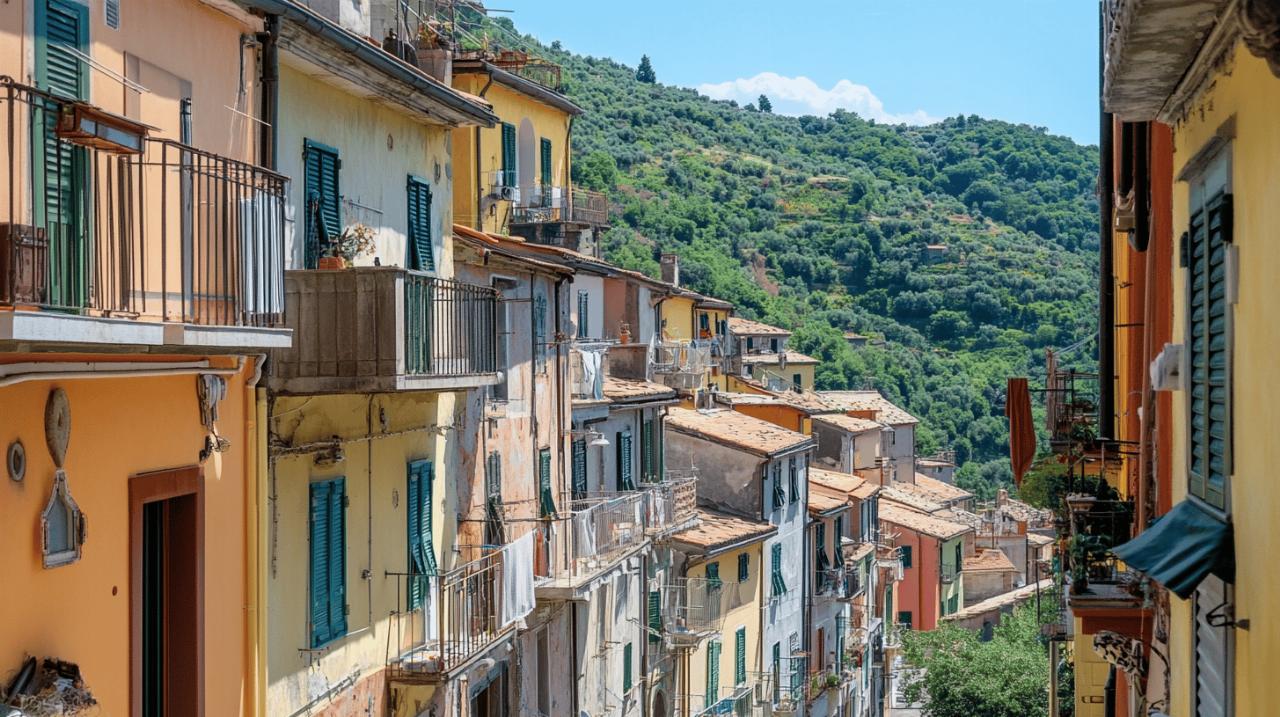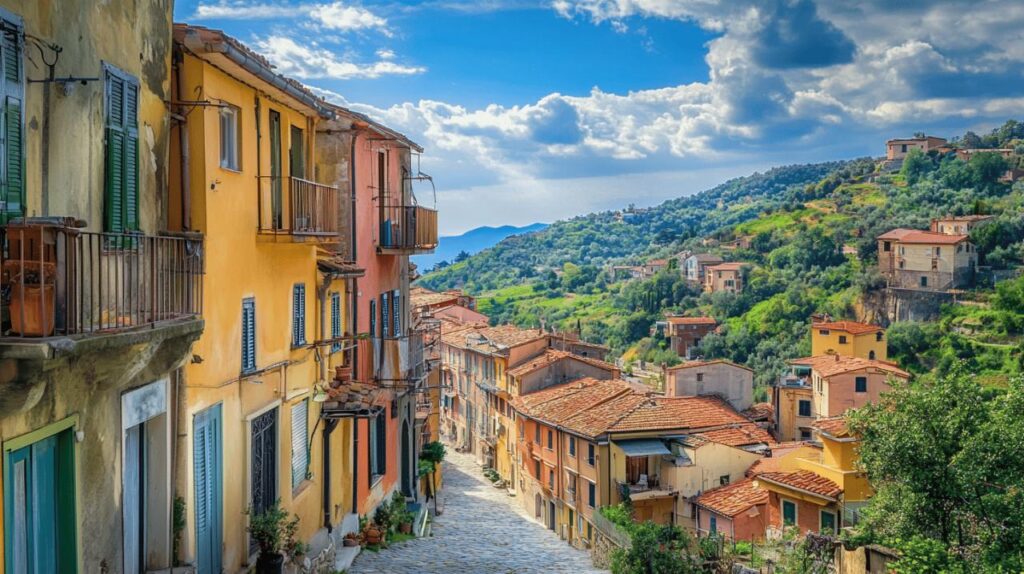Imagine waking up to the golden sunlight streaming through your window, the aroma of fresh espresso filling the air, and the melodious sound of Italian chatter echoing from the cobblestone streets below. This dream of Italian homeownership might seem unattainable for many, but thanks to an innovative scheme, it could be closer to reality than you think—for just one euro. Italy’s unique property initiative has captured global attention, offering abandoned homes at a nominal price to breathe new life into dwindling communities. Let’s delve into this extraordinary opportunity that’s transforming Italy’s rural landscape and creating new possibilities for aspiring property owners worldwide.
Understanding italy’s 1 euro property scheme
Origins and aims of the initiative
The one-euro houses project, which began in Italy in 2017, represents a creative solution to a pressing problem affecting many picturesque Italian villages. As Domus Agency explained in a recent article, this initiative aims to revitalise areas suffering from severe population decline while preserving their unique cultural heritage. Many of these properties were abandoned decades ago when Italians migrated to America in the late 19th and early 20th centuries, leaving behind ghost towns with crumbling buildings and diminishing populations. The scheme seeks to attract new residents, stimulate local economies, and save historic buildings from falling into complete disrepair.
Regions and towns participating in the programme
From the sun-drenched hills of Sicily to the rustic charm of Tuscany, numerous Italian regions have embraced the one-euro house initiative. Towns like Mussomeli in Sicily with its population of approximately 11,000 and Zungoli, a picturesque hilltop settlement with around 1,000 residents, are actively listing properties. Smaller communities such as Borgomezzavalle in Piedmont, with fewer than 400 inhabitants, are also participating. Other notable locations include Ollolai in Sardinia, which famously offered homes to Americans considering relocation after the 2016 election, and Fabbriche di Vergemoli nestled in the Apuan Alps of Tuscany. Each town brings its own unique character and charm, from coastal proximity to mountain vistas, offering diverse lifestyle options for potential buyers.
The actual costs beyond the 1 euro price tag
Renovation requirements and timeframes
While the initial purchase price might be irresistibly low, prospective buyers must understand that the true investment begins after the property changes hands. Most one-euro houses are historic structures in varying states of disrepair, often requiring extensive renovations including new roofs, reinforced walls, and modernised interiors. Municipalities typically mandate that renovations commence within a specified period and reach completion within a timeframe ranging from one to five years, depending on the location. The renovation costs can vary dramatically based on the property size and condition, with estimates ranging from €25,000 for small apartments where owners contribute their own labour, to upwards of €250,000 or even €500,000 for larger properties requiring professional contractors. These substantial renovation investments might not always be fully recouped in the property market, making this more of a lifestyle choice than a straightforward financial investment.
Legal fees, taxes and administrative expenses
Beyond renovation costs, buyers must budget for various administrative expenses. Closing fees typically range between €5,000 and €6,000, covering notary services, registration, and other legal requirements. Many municipalities also require buyers to place a deposit, often around €5,000, as a guarantee that the promised renovations will be completed. This deposit is generally refundable upon successful completion of the work. Additional costs may include property taxes, though some villages offer incentives such as ten-year exemptions from certain property taxes to further entice buyers. For non-residents seeking mortgages, the financial landscape can be challenging, with Italian banks often requiring larger down payments and offering less favourable terms than they would to local buyers.
The application process for prospective buyers
Eligibility criteria and necessary documentation
The good news for international dreamers is that foreigners can indeed purchase property in Italy, making the one-euro house scheme accessible to a global audience. Eligibility requirements vary by municipality, but most require applicants to demonstrate financial capacity to complete the required renovations. This typically involves providing proof of income, financial statements, or sometimes a detailed renovation plan with cost estimates. Buyers must also obtain an Italian fiscal code, similar to a tax identification number, which is necessary for property transactions in Italy. Some towns may give preference to applicants who plan to become permanent residents rather than those seeking holiday homes, though this varies considerably between locations.

Step-by-step guide to submitting your interest
The journey to acquiring a one-euro home typically begins by contacting the local municipal office in the town of interest. Many municipalities maintain online listings of available properties, though these can quickly become outdated as interest surges. After identifying potential properties, prospective buyers should arrange visits where possible to assess the actual condition of the buildings and get a feel for the surrounding community. Once a property is selected, the application process involves submitting the required documentation to the municipal office, potentially participating in an auction if multiple parties express interest in the same property, and finally signing a preliminary contract. This is followed by the formal deed transfer at a notary’s office, where the final payment and fees are settled. Throughout this process, having local assistance, whether through a real estate agent, translator, or legal advisor, can be invaluable in navigating the complexities of Italian property law.
Challenges and Considerations for Foreign Investors
Language barriers and local bureaucracy
For foreign investors, one of the most significant hurdles is navigating Italy’s notoriously complex bureaucratic system without fluency in the language. Official documents, building regulations, and legal contracts are typically in Italian, and while some officials in tourist areas might speak English, this is far from guaranteed in the rural communities where most one-euro houses are located. The Italian legal system also moves at its own pace, with property transactions sometimes taking considerably longer than expected due to administrative delays. Foreign buyers often find it beneficial to engage local professionals who understand both the language and the intricate workings of Italian bureaucracy. Some websites specialising in one-euro properties offer directories of English-speaking estate agents, builders, and legal advisors who can guide foreigners through the process.
Managing renovations from abroad
Overseeing a renovation project from thousands of miles away presents unique challenges. Foreign buyers must either plan extended stays in Italy during the renovation period or find trustworthy local project managers. There have been reports of locals inflating prices for foreign buyers who may not be familiar with regional construction costs. Additionally, some municipalities restrict the choice of builders to local companies, which can impact both costs and timelines. Remote communication with contractors can be complicated by language differences and varying expectations about construction standards. Successful foreign investors often establish strong local connections, make regular visits to the property during renovation, and build relationships within the community to ensure their project progresses smoothly even in their absence.
Success stories and cautionary tales
Profiles of buyers who transformed 1 euro properties
Among the success stories is Meredith Tabbone, an American who purchased and renovated a one-euro house in Sambuca di Sicilia. Her journey from acquiring a crumbling structure to creating a beautiful Mediterranean home has inspired many potential buyers. These transformation stories often share common elements: careful planning, realistic budgeting that includes substantial contingency funds, patience with the renovation process, and genuine enthusiasm for integrating into Italian village life. Successful renovators typically embrace the opportunity to preserve historical elements while tastefully modernising interiors, creating unique homes that honour local architectural traditions while meeting contemporary living standards. Many have leveraged their renovations into successful holiday rental businesses, while others have fulfilled lifelong dreams of retirement in the Italian countryside.
Common pitfalls and how to avoid them
For every success story, there are cautionary tales of buyers who underestimated the challenges. Common mistakes include drastically underbudgeting for renovations, failing to account for the time required to navigate Italian bureaucracy, and purchasing without thoroughly investigating the property’s structural condition. Some buyers discover too late that their dream home requires far more extensive work than anticipated, with hidden issues like unstable foundations or problematic plumbing systems dramatically increasing costs. Others struggle with unrealistic timeframes, not allowing for inevitable delays in permit approvals or contractor availability. To avoid these pitfalls, experienced advisors recommend working with structural engineers to thoroughly assess properties before purchase, budgeting at least 20% more than initial estimates for unexpected costs, and approaching the project with flexibility regarding timelines. Perhaps most importantly, successful buyers approach the process as an adventure rather than merely a transaction, embracing the cultural immersion that comes with property ownership in rural Italy.


